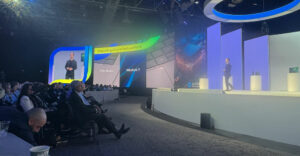
A team of scientists has achieved what might prove to be a breakthrough in quantum computing.
The group has managed to partially suppress quantum decoherence, one of the major obstacles to quantum computing, by using crystalline molecular magnets.
Decoherence, which is a much-debated topic, is believed to be the loss of information from a system into the environment that fixes a system into one state.
By doing so, decoherence negates quantum states, which exist because of the entanglement of multiple electrons and molecules.
Think of it this way: A fishing net, where all the strands are linked to each other by knots, is like a quantum state. Separating out a strand by cutting the knots binding it to other strands is what happens when decoherence sets in.
The Decoherence Experiment and Quantum Computing
Quantum computing uses quantum bits, or qubits, to encode information. A qubit is a unit of quantum information. Unlike standard electronic bits, which have to be either a one or a zero, a qubit can be either a zero, a one or a superposition of both.
Decoherence fixes the qubit as either a zero or a one.
The theory of decoherence studies concrete, spontaneous interactions between a system and its environment that lead to suppression of interference.
There are two types of decoherence — intrinsic decoherence, caused by the parts of the qubit system, and extrinsic decoherence, caused by imperfections in the system.
The experiment used molecular magnets. These suppress extrinsic decoherence because of their purity. Extrinsic decoherence was reduced to the point where it was no longer observable, said Susumu Takahashi, assistant professor in the department of chemistry at the University of Southern California.
This suppression let the scientists calculate intrinsic decoherence so they can figure out what the optimum conditions are for building a quantum computer, Takahashi explained.
In the experiments, the qubits lasted about 700 nanoseconds. However, the theory postulated by the team predicts that they will last about 500 microseconds, Takahashi told TechNewsWorld.
Superconducting qubits last less than one microsecond, which indicates the team’s theory is on the right track, Takahashi remarked.
More on the Experiment
The use of crystalline molecular magnets let the team build qubits out of many quantum particles rather than one quantum object.
“This is a mesoscopic system,” Takahashi said. “We are observing a collective motion of spins — a so-called magnon — rather than a single spin. So, our qubit consists of many spins.”
Mesoscopic physics is a sub-discipline of condensed matter physics which deals with materials between the size of a quantity of atoms, such as a molecule, and materials measuring micrometers.
A mesoscopic object is subject to the rules of quantum mechanics.
A magnon is a collective excitation of the spin structure of the electrons in a crystal lattice. It can be viewed as a quantize spin wave in quantum mechanics.
The magnets consist of a cluster of eight Fe (iron) ions, Takashi said.
Takahashi conducted his research as a project scientist in the Institute of Terahertz Science and Technology and the Department of Physics at the University of California, Santa Barbara.
Research for the article was performed in collaboration with Phil Stamp and Igor Tupitsyn of the University of British Columbia, Johan van Tol of Florida State University, and Chris Beedle and David Hendrickson of the University of California, San Diego.
The work was supported by the National Science Foundation, the W. M. Keck Foundation, the Pacific Institute of Theoretical Physics at the University of British Columbia, the Natural Sciences and Engineering Research Council of Canada, the Canadian Institute for Advanced Research and the University of Southern California.
Takahashi has been at USC since 2010.





















































